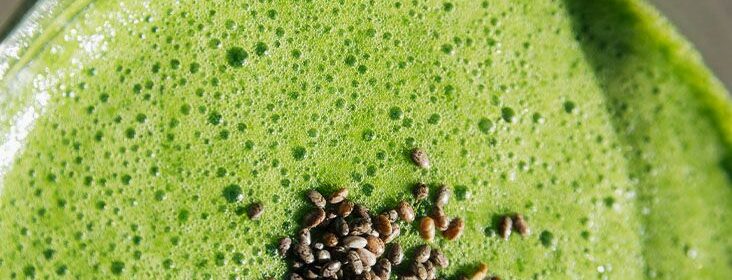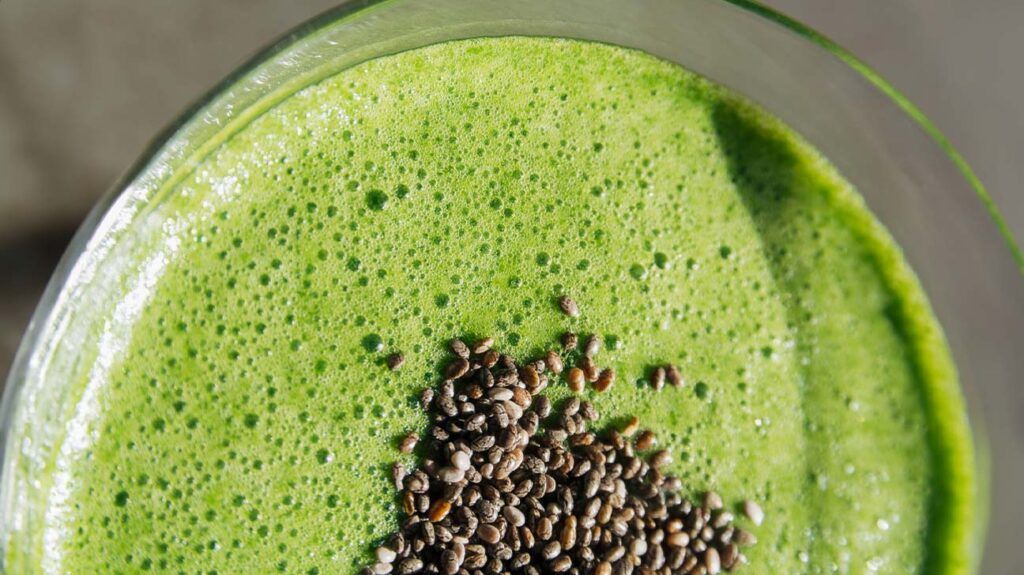Could chia seeds lower your risk of hypertension and cancer?

- Researchers have sequenced the genome of the small but mighty chia seed.
- The mapping identified numerous genes linked to the health benefits of chia seeds.
- Researchers say understanding the chia seed genome could pave the way for future treatments for high blood pressure and cancer.
- Plants are often the source of pharmaceutical drugs, and new insights from genomic databases such as this may prove invaluable to future studies.
A study at Oregon State University (OSU) has mapped the genome of chia seeds to help future researchers take advantage of the plant’s potential for benefiting human health in various ways.
The study identifies genetic properties in chia seeds that may one day be leveraged in pharmaceuticals for treating high blood pressure and cancer. Other study findings support chia seeds’ antioxidant and anti-inflammatory properties.
The chia plant, Salvia hispanica L., belongs to the family Lamiaceae. It is commonly grown on subsistence farms in marginal agricultural areas.
The chia plant was once considered secondary, along with cassava, yams, millet, small grains, and pulses such as lentils. Being less prioritized, these plants were often considered “orphan” crops.
Historically, more attention has been paid to primary crops, cereal plants like rice, wheat, and maize, and small grains, such as legumes, oilseed, and tubers. These have all been important to the fight against global hunger.
However, orphan foods are growing in popularity for their health benefits. As climate change alters the agricultural landscape, these lesser-grown plants are becoming of interest. The mapping of chia seeds’ genomes is one step in this direction.
The new study presents an entire chia seed reference genome. It is 303.6 MB in size and encodes 48,090 annotated protein-coding genes. It identifies chia genes associated with valuable nutrients.
The study is published in Frontiers in Plant Science.
A closer look at the health benefits of chia seeds
This is the first report of in silico mapping of a plant genome for the purpose of assessing its health benefits.
Dr. Pankaj Jaiswal is a member of OSU’s Department of Botany and Plant Pathology. He was the senior investigator of the new study.
While the study is important for what it reveals about chia seeds, Dr. Jaiswal noted, “It was the first time a plant genome was analyzed for its potential nutritional quality and discovery of biopeptides that may play a role in improving human health conditions.”
Chia seeds are hardly alone in their nutritional qualities that have caught the attention of pharmaceutical researchers.
According to the U.S. Department of Agriculture (USDA), 40% of pharmaceutical drugs currently available in pharmacies in the United States are derived from plants, including the top 20 best-selling medications.
Aspirin, for example, is derived from the bark of a willow tree. Leukemia in children is treated with a medicine based on molecules from the Madagascar periwinkle.
The use of plants for medicinal purposes has a long history, dating back to 3,500 BC and Ancient Egypt. Chinese healers were using plants as drugs by 2,700 BC.
Why are chia seeds so good for you?
For many people in the West, chia seeds are perhaps best-known for the growing “hairs” in chia pets, a favorite childhood and decorative toy.
Nutritionists know, however, they are far more than that.
Michelle Routhenstein, registered dietitian nutritionist and preventive cardiology dietitian at EntirelyNourished.com, not involved in the study, listed some health benefits attributed to chia seeds:
“Chia seeds contain several minerals like calcium and magnesium, which play a role in reducing blood pressure. Additionally, their rich antioxidant and alpha-linolenic acid content, an omega-3 fatty acid derived from plants, may help to alleviate oxidative stress and inflammation, both factors that could contribute to heart disease.”
Dr. Jaiswal likened chia seeds to a “treasure trove” of nutrients.
Describing his chia-seed genetic blueprint as a work in progress, Dr. Jaisway was cautious about ascribing all the reported benefits to the plant.
Still, he said the results of his research thus far have been promising. “It is likely a target for discovering beneficial biomolecules,” Dr. Jaiswal said.
“All of the anti-aging peptides previously reported from chia were found present in the proteins encoded by the genes that were expressed in seeds. In their native form in the seed, they play a role as seed storage protein, but when digested by the digestive juices, the released biopeptides may acquire a different role,” he said.
“Many such health benefit studies were conducted using the whole seeds or the flour. Therefore, we need a lot of support for the research and investigation to connect the molecules we discovered to their health benefits,” Dr. Jaiswal continued.
New research could lead to improved chia seed crops
According to Dr. Jaiswal, one of the study’s benefits is that the chia genome blueprint will “help the plant breeding community in developing genetic resources” to improve crops. Traits of improved chia seed crops might include:
- yield and nutrition quality
- shorter flowering and seed development time
- improved frost and cold tolerance in the northern latitudes
- improved day-neutral or short-day flowering
“We are investigating climate resilience and disease resistance in rice,a global staple food crop, and plan to combine chia and dry beans to discover potential human health benefits by studying molecular interactions,” Dr. Jaiswal said.
Finally, accompanying the research is the development of the Salvia genomics database (SaliviaGDB) to aid future studies and help develop applications for chia seeds.
Source: Read Full Article
